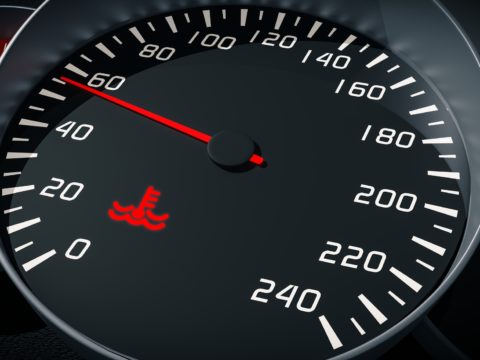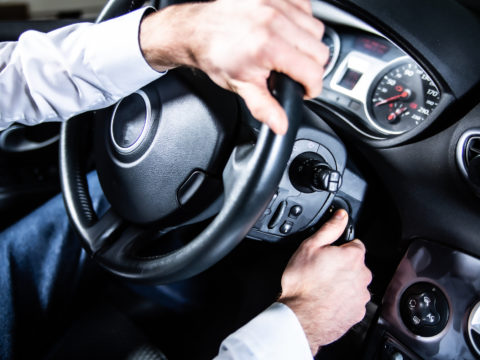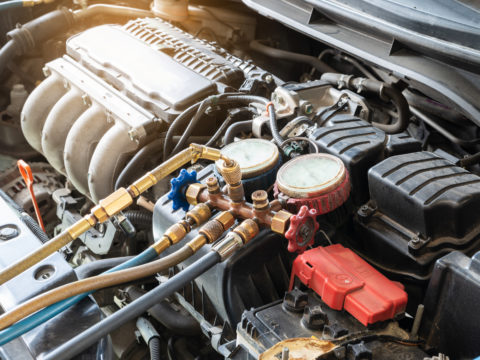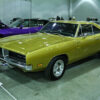Driving a car is a convenient way to get around, but it can come with its share of concerns or problems. Have you ever been on the road when your car begins to shake? There are many underlying causes for a shaky car you should familiarize yourself with.

Contents
Reasons Why My Car Shakes at High Speeds
Several things may explain why your car shakes when you drive at high speeds. Tire balance, axle, and various engine issues are the top reasons for a shaking car.
The reasons why your car shakes when accelerating at a low speed compared to a high one can also differ.
Disconnected Vacuum Hose
When the vacuum hose becomes torn or disconnected, air may leak out. These air leaks will cause the car computer to misadjust the air and fuel ratio. Unfortunately, your engine will experience all types of problems leading to a shaking car.
How to Fix It
Conduct a visual inspection to check the hose for scratches and cracks. Try detaching the vacuum hose and then attach a vacuum gauge in its place to take a reading. A hissing sound can indicate a big leak. If you can’t locate the suspected leak, a mechanic visit may be necessary. You may have to replace the hose.
Bent Axle
The steel rod that connects the wheels to the tires is the axle. Any accident can cause your strong axle to bend. One of the issues that may surface from such an impact is a shaking car, especially once you hit 50 miles per hour.
How to Fix It
A mechanic will have to straighten or replace the axle. Just be prepared because it is an expensive item to fix.
Dirty Spark Plugs
When your spark plugs have dirt buildup or damage, it affects the engine. The plugs give the engine the spark to keep running.
How to Fix It
A simple solution is to clean the spark plugs. In some cases, you may have to replace them.
Issues With CV Joint
The CV joints are part of the axle. A car can shake at high speeds if the inner CV joint wears off. Rear shaking can result from back inner CV failure. The CV joint problems can often be traced to worn-out CV boots, which protect the elements from getting into the axle.
How to Fix It
The CV joint boots are the usual culprit in defective CV joints. A mechanic has to replace worn-out boots with new ones.
Imbalanced Tires
When tires are out of balance, the initial shaking starts when driving at a low speed. This shaking gets worse and worse as you go faster. The steering wheel may begin to vibrate as well, which can affect your comfort and control.
How to Fix It
The best solution for this issue is to go straight to the mechanic. An auto professional will correct the issue by using a balancing machine for the tires.
Why Your Car Vibrates at Certain Speeds
The most common reason why your car vibrates at certain speeds concerns issues with tires. From misalignment to low trend, poor tire placement or maintenance can make your car feel like it has a nervous condition.
As mentioned before, unbalanced tires cause vibration at low speeds which only get worse as you accelerate. Take the time to check your tires for uneven tread wear. A simple penny test at home can help.
Car Shakes at High Speeds After Alignment
A wheel alignment should make your car run smoothly, so the shaking could mean the job wasn’t done properly.
Unbalanced Tires
If the car is now steering sideways after an alignment, it can be due to unbalanced tires.
Did you run over a pothole shortly after the alignment? If so, that could throw the alignment off again.
How to Fix It
You most likely have an issue with tire balance. Take the care back to the mechanic to do a proper balance check. If you are comfortable handling your car, refer to the car manual for DIY steps to fix front-end alignment.
Car Shakes at High Speeds After New Tires
If the shaking happens right after you get new tires, the tires are probably the issue.
Poor Alignment, Overinflation, or Damage
Already having problems with new tires? You may have unbalanced wheels, poor wheel alignment, overinflated tires, defective tires, or damaged rims.
How to Fix It
In the event of unbalanced wheels, you can attach small lead weights to the car rim. Of course, it is easier to use the wheel balancer at the mechanic or tire shop. You can follow the steps in your car manual for DIY wheel alignment.
While at home, you can easily let extra air out of an overinflated tire.
Unfortunately, any defective rims or tires will need replacing.
Car Shakes at High Speeds After Tire Rotation
Similar to getting an alignment, a tire rotation should prevent your car from shaking.
Low Thread or Lack of Balance
When tires have not been correctly rotated, it will cause the tread to be more worn down on one edge than another. Mechanics may not have balanced the tires correctly during the rotation.
How to Fix It
If your mechanic did the rotation, take the car back to check tire balance. At home, you can do a manual tread check using a penny.
Steps to conduct a manual tread check:
- Get a penny
- Find where tread appears lowest on the tire
- Place the penny into a groove. Lincoln’s head should go in first
- See if Lincoln’s head is visible above the tread
A fully visible head indicates “2/32” or less tread depth, which means these tires need replacing.
If you have a carjack at home, you can also rotate your own tires. Before doing so, make sure you know if your tires move in a unidirectional or bi-directional way. Then you can switch out the wheels and recheck tire pressure.

Car Shakes at High Speeds and When Braking
There may be something wrong with your braking system if the car shakes when you use it.
Brake Pads, Worn Suspension System, or Wheel Issue
Dirty or worn-out brake pads can cause shaking. Dirt and oil can get into brake pads and grip the rotor. Those same rotors may become unbalanced, or the car may have a sticking brake caliper.
The ball joints, tie rods, and wheel bearings, which make up the suspension system, can become worn down with time. Unbalanced tires or wheels can also play a part in shaking brakes when going 50-55 miles per hour.
How to Fix It
Use a balancer to clean and readjust the wheels. You can often fix your wheel issue with a screwdriver, carjack, and wrench. Follow these steps:
- First, remove the tires with a wrench
- Remove weights and clean out dirt
- Place assembly on the balancer and check the manual for instructions.
- Mark where you need to add weights
- Recheck tire balance after adding weights
- Place tire back
- Tighten the tire’s nuts
- Repeat for all tires
Oftentimes, brake issues are preventative with maintenance service. Go for your regular car service to get a brake caliper check. The inspector looks at the brake pads when you go for an oil change. If you are a long-distance driver, play it safe and get things checked out bimonthly. Don’t hesitate to bring a car in for an additional inspection before taking a long road trip.
Car Shakes at High Speeds During Winter
Winter weather may be responsible for your car’s odd behavior rather than the car itself.
Ice and Snow
When you drive your car in typical winter conditions, ice and snow can build up on the tires. A build of the elements can make your tires unbalanced.
How to Fix It
Using an old glove, remove any snow or ice from the wheel, wheel well, and rotor. Hot water can also do the trick as long as the snow is light.
Is It Dangerous to Drive a Car That Shakes at High Speeds?
The short answer is yes! It is simply not normal for a car to shake when you are driving – at any speed. Shaking is an indicator of an underlying problem that can become worse if you don’t fix it.
For example, healthy brakes are vital to properly stop the car. When brake pads get worn down, it can affect the braking distance and lead to an accident.
Misaligned tires can cause shaking. As a result, the steering wheel can also shake and cause you to lose control.
When low tread causes tire imbalance, you won’t have a safe amount of traction on the road. Low tire tread compromises driver safety by causing:
- Hydroplaning
- Excessive heat buildup
- Tire blowouts
- Low tire air pressure
- Increased risk of puncture
A bald tire can’t effectively grip a wet road, causing you to lose braking and steering power. A tire blowout can result in fatal accidents at high speeds, so don’t ignore a shaking car.
What to Do If the Problem Persists
Don’t continue to drive a car that shakes at high speed. Take it in for a thorough inspection as soon as possible. Even if you are good with cars, a persistent problem like this needs a professional. It may also be an indicator that your car is on its last legs. You may have to prepare for extensive repairs (such as brakes or axles) or buy a new one soon.














